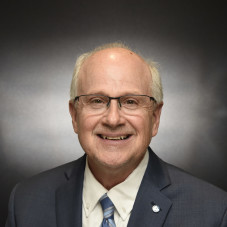For anyone who has been working in our industry for a few decades, you’re aware that what used to be referred to as “vocational” education has taken on a newer moniker: career and technical education, or CTE. The idea behind this change was to improve the image of vocational education, improve perceptions about it in the minds of the public, and to project a more positive image of working in the skilled trades.
SkillsUSA
In 1965, the Vocational Industrial Clubs of America Inc. (VICA) was formed as a national organization supporting schools and students who were on a skilled trades track. VICA changed the name of its national championships to SkillsUSA – VICA in 1994 and eventually changed the name of the organization and its national championship to SkillsUSA in 2004 to fully demonstrate the change from vocational education to CTE.
AMT has been a proud supporter of SkillsUSA through our sponsorship and support of the National Institute for Metalworking Skills (NIMS) in conducting the SkillsUSA National Championships for CNC Milling, CNC Turning, and CNC Technician. On May 5-6, 2021, #ConnectToMyFuture and the SkillsUSA National Championships were conducted virtually across all skilled trades where schools were able to compete in their states and regions remotely. As with all things, the pandemic had a negative impact on whether schools and program labs could be open. Fewer students qualified to compete at nationals as a result, but we persevered, and a planned addition of a demonstration of a 5-axis CNC machining competition went forward this spring.
The MT classroom of the future
As transformational technologies take hold and impact the ways that we manufacture things, and as a Manufacturing Career Cluster Sponsor of SkillsUSA, AMT will continue to advocate for new CTE programs at schools. We will focus on career pathways that reflect our view of the manufacturing technology classroom of the future, that can support the next generation of career pathways in emerging technologies, and that can develop into additional national competitions as a way of raising awareness about CTE pathways.
Numbers don’t lie
Our biggest challenge remains in elevating educational programs that fit our industry’s needs with regard to workforce and in changing the way that young individuals and their families think about their education-to-career pathway choices. Even in an environment where $1.5 trillion in student loan debt exists, many feel that a degree from a four-year college presents the best, most viable education option, but the data does not support that premise. Typically, less than 50% of college graduates end up working in their major of study, and many college grads are underemployed.
In 2020, 62.7% of 2020 high school graduates ages 16-24 were enrolled in colleges or universities, down from 66.2% in the prior year. Among 20-29-year-olds who received a bachelor’s degree in 2020, 67.3% were employed, down from 76.0% in 2019. These changes reflect the effect of the coronavirus pandemic, and the data is too recent to understand what other options these individuals have chosen.
Resolving the skills gap
For our industry to be able to resolve the persistent skills gap that we’ve been challenged by for decades now, we must continue to advocate at the national level and in our local communities for CTE programs, industry-recognized standards and credentials, and rid any remaining negative stigmas that exist around CTE education-to-career pathways to our industry.
AMT’s forthcoming Manufacturing Mandate 3.0 will outline our recommendations with regard to Smartforce Development, which will include strategies for creating a new framework for CTE that keeps pace with U.S. manufacturing.
For more information, please contact gjones@AMTonline.org, and for more timely updates, follow @GregoryAJones Find our social media at @IMTS_Smartforce on Twitter and Instagram or on Facebook at facebook.com/IMTS.Smartforce.









